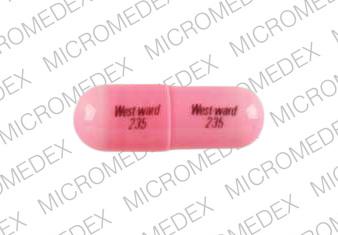Propoxyphene Dosage
Applies to the following strengths: napsylate 100 mg; hydrochloride 65 mg
Usual Adult Dose for:
Additional dosage information:
Usual Adult Dose for Pain
Propoxyphene was voluntarily withdrawn from the US market by the manufacturer in November 2010 due to new data showing that the drug can cause serious toxicity to the heart, even when used at therapeutic doses.
The following dosage information applied to when the drug was available in the US:
65 mg (HCl) orally every 4 hours as needed or
100 mg (Napsylate) orally every 4 hours as needed.
Renal Dose Adjustments
Data not available
Liver Dose Adjustments
Initial dose: 50 mg of propoxyphene napsylate orally once.
Because of the risk of accumulation of propoxyphene in patients with liver disease and because patients with liver disease may be particularly sensitive to the sedative properties of this drug, use of multiple doses of propoxyphene is not recommended.
If this patient has hepatic failure, use of propoxyphene is not recommended.
Because the elimination of propoxyphene is significantly impaired in patients with liver disease, and because dosage forms of propoxyphene hydrochloride do not readily accommodate small doses, use of propoxyphene hydrochloride is not recommended for the treatment of this patient."
Dose Adjustments
Doses should be titrated to appropriate analgesic effect with consideration of severity of pain and patient size.
If a patient on prolonged therapy, then discontinuation should be gradual. Propoxyphene should be reduced by 25% to 50% daily and the patient should be carefully monitored for signs/symptoms of withdrawal.
Precautions
Propoxyphene should be used with great caution, if at all, in patients with liver disease.
Dialysis
Propoxyphene is not dialyzable.
Other Comments
The maximum dose is 390 mg/day (HCl) or 600 mg/day (Napsylate).
More about propoxyphene
- Check interactions
- Compare alternatives
- Reviews (23)
- Drug images
- Side effects
- During pregnancy
- Drug class: Opioids (narcotic analgesics)
- Breastfeeding
Patient resources
Professional resources
Other brands
Related treatment guides
Further information
Always consult your healthcare provider to ensure the information displayed on this page applies to your personal circumstances.

